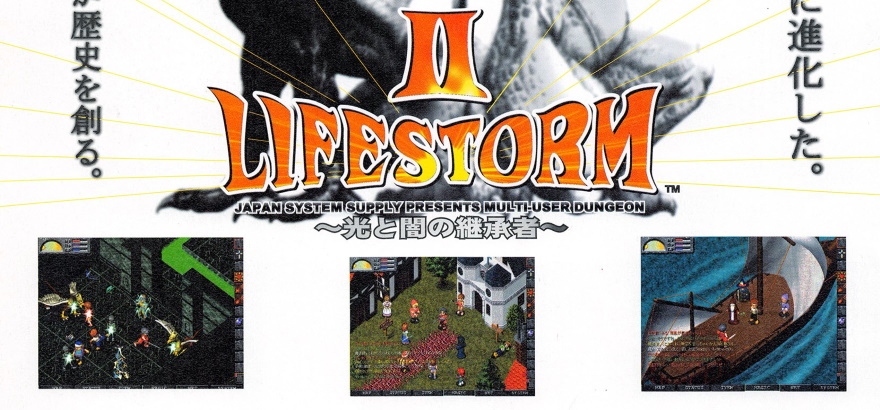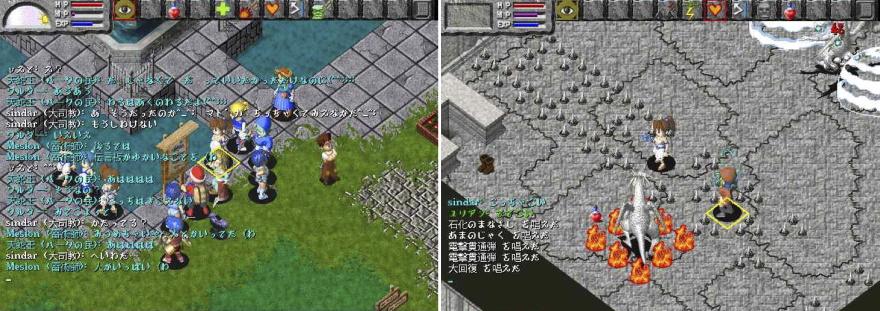
In comparison to how widely that China and Korea’s game development studios embraced MMORPGs right from the beginning, Japan’s been curiously low-key in creating for this genre. Oh, don’t get me wrong: The country’s produced several notable MMOs, but it’s not been quite the obsession with dev studios the way it is with its neighbors. I might even have a hard time coming up with a top 10 list of Japanese MMORPGs, come to think of it.
But if I did make such a list, I would need to make sure that I included Lifestorm and its sequel, Lifestorm II. As far as I can tell, 1996’s Lifestorm was the first MMORPG developed in that country, which makes it a curious entry for this column.
So let’s see what we can dig up about this game from the past to preserve it for future museum visitors to enjoy!
In 1985, Japan System Supply was formed in Osaka to develop and publish game, educational software, and (later) internet titles. It created games for pretty much every platform out there, including the NES, PC Engine, Amiga, GameBoy, and Windows.
As online worlds started to take off in the mid-1990s, Japan System Supply attempted to get into the market with its own online RPG: an adorably colorful isometric fantasy realm called Lifestorm. Initially released as a Java applet, Lifestorm graduated to a full-fledged Windows product in 1997 and then spawned a sequel in 1998.
In fact, lead developer Kengo Nakajima became the first person in the world to develop an MMORPG with Java applets, which should get him a plaque somewhere. Nakajima started programming at a computer club in college. After his stint at JSS, he went on to work on middleware software for online games.
Lifestorm ushered players into a medieval fantasy world that was, like many MMOs of the time, sprite-based. But it definitely had a visual style that was more colorful and cartoony than competitors like Lineage. It also appears to be tile-based, with characters moving around on a grid. Unfortunately, there really isn’t much else that remains out there about this early title, including how it played and what it offered.
The Lifestorm games were modest, but not significant, successes for the Japanese market, netting tens of thousands of subscribers versus the hundreds of thousands of subs that some Korean MMOs were seeing at the time. Dragon Quest X’s producer Yousuke Saito said that he cut his teeth on Lifestorm and other very early MMOs, which helped to encourage his career in online game development.
Alas for poor Japan System Supply, the studio folded in 2000 and its assets were bought out by SETA Corporation and Square-Enix. When the studio ended, so did the Lifestorm series, bringing this short-lived MMO world to a hasty conclusion.
 Believe it or not, MMOs did exist prior to World of Warcraft! Every two weeks, The Game Archaeologist looks back at classic online games and their history to learn a thing or two about where the industry came from… and where it might be heading.
Believe it or not, MMOs did exist prior to World of Warcraft! Every two weeks, The Game Archaeologist looks back at classic online games and their history to learn a thing or two about where the industry came from… and where it might be heading.

















